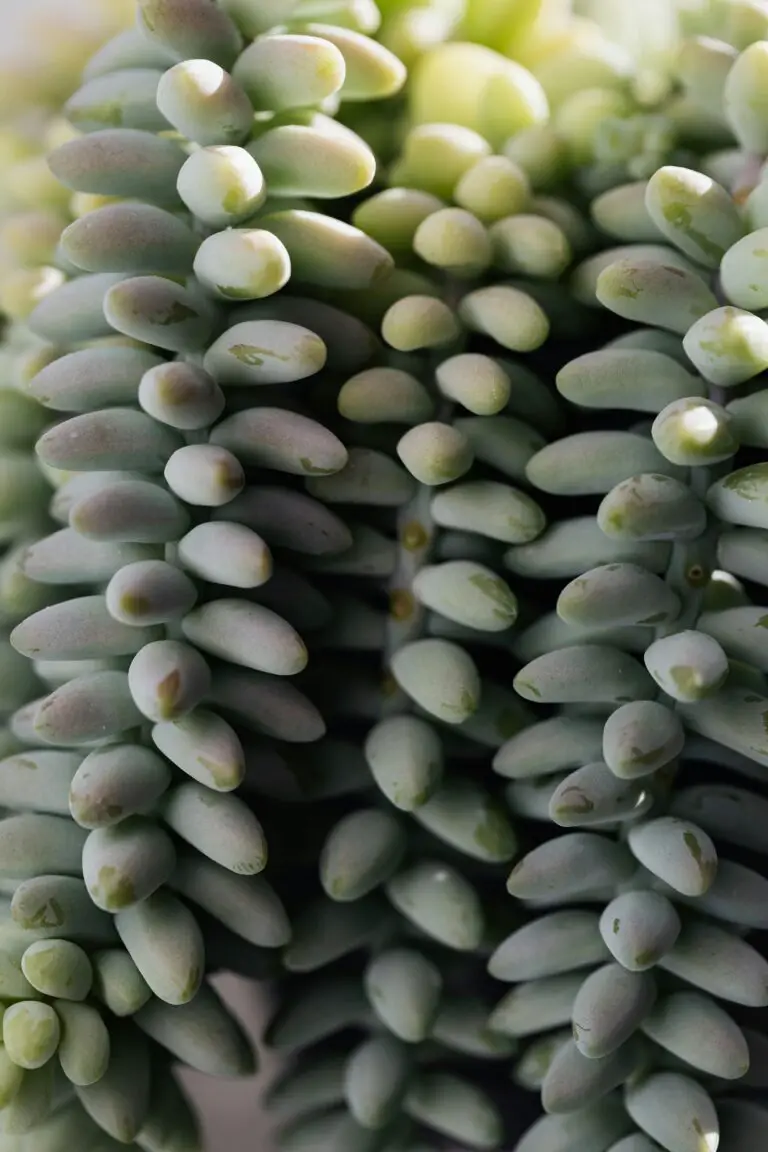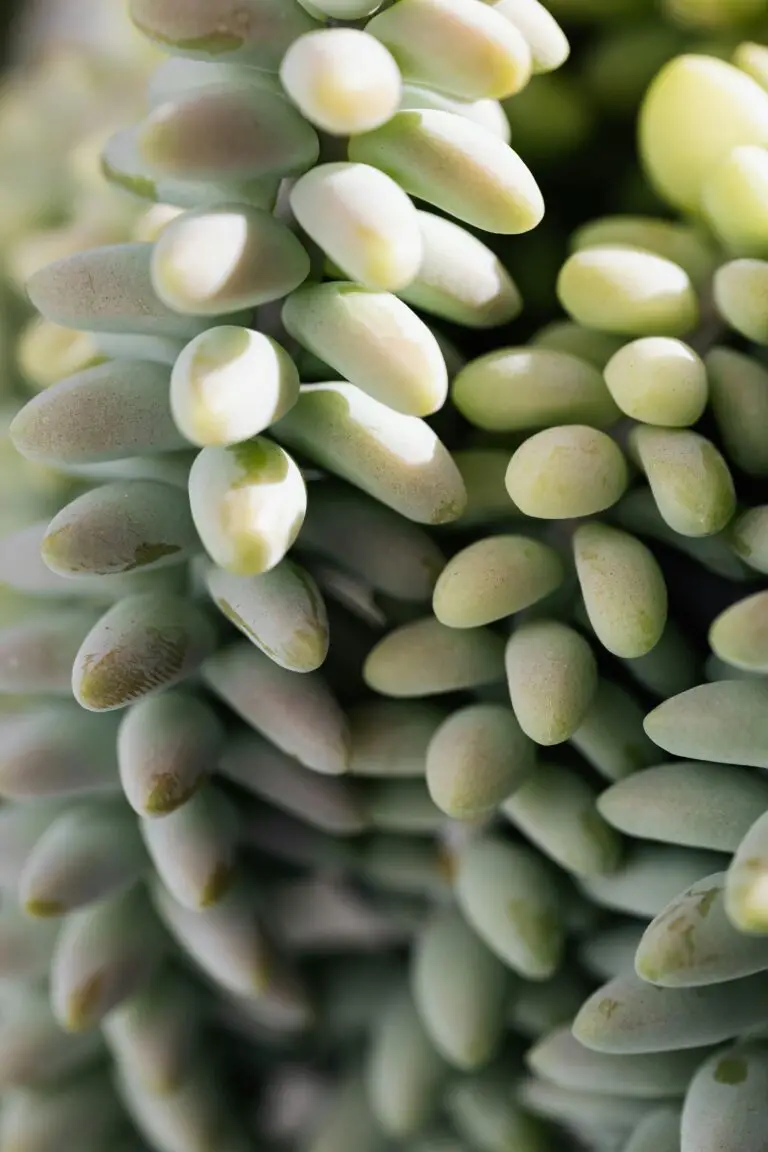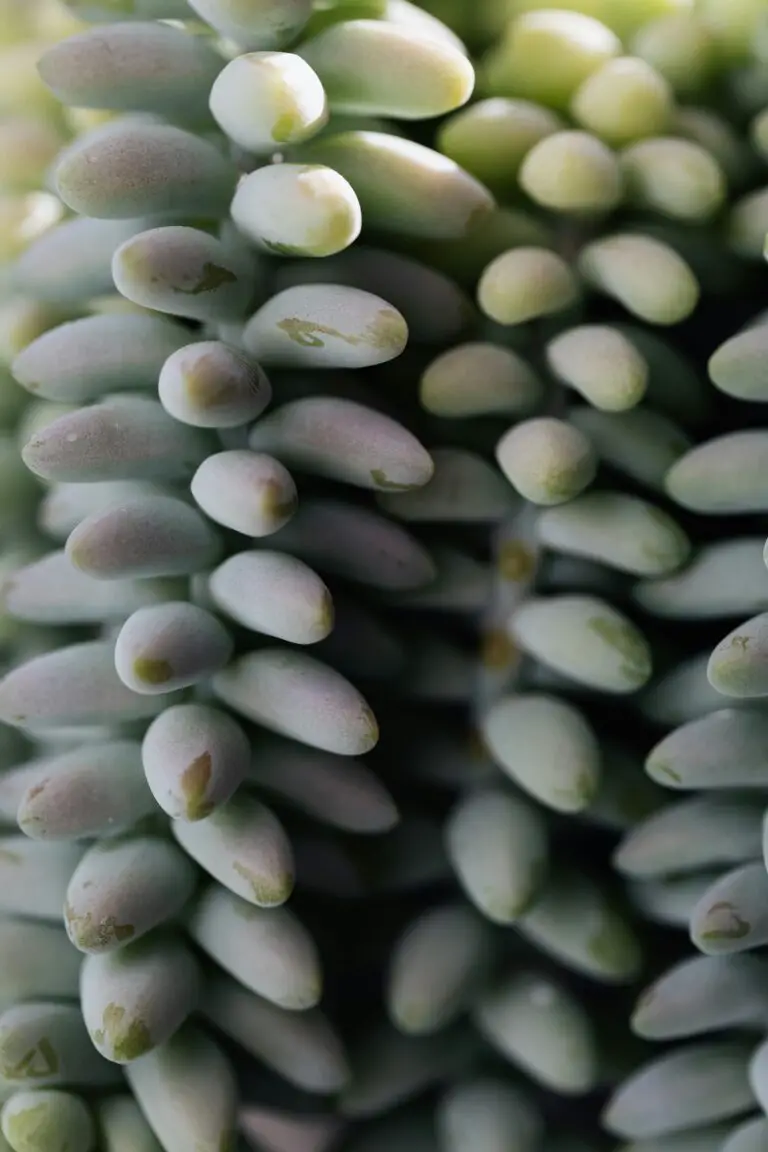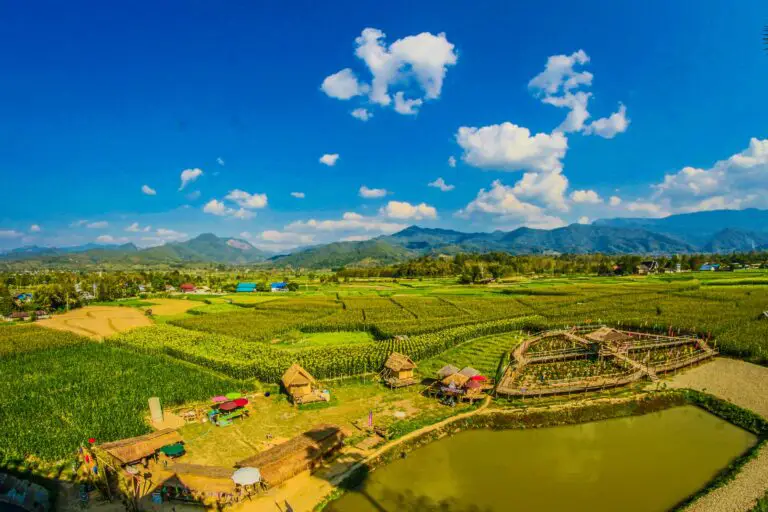Introduction to Sedum: A Succulent Overview
Welcome to the enchanting world of Sedum, a diverse genus of succulent plants that have captured the hearts of garden enthusiasts and botanists alike. Known affectionately by its whimsical common name, ‘stonecrop,’ Sedum is a resilient survivor, often found roughing it out on rocky ledges and thriving in arid conditions where other plants might not dare tread. You see, stonecrop isn’t just a catchy nickname; it’s a testament to the plant’s hardy nature, able to root into stony crevices and flourish. It’s in these seemingly inhospitable environments that Sedum plants truly showcase their rugged beauty.
Imagine a lush rooftop garden in the heart of the city, where vibrant Sedum carpets the space, transforming it into an urban oasis. Not only do these plants add a splash of color with their fleshy, often-times multihued leaves, but they also serve a higher purpose. They’re not only drought-tolerant troopers, they’re rooftop warriors, combatting the urban heat island effect and giving city-dwellers a breath of fresh, cooler air. It’s this remarkable adaptability that has enabled Sedum to travel far and wide, well beyond its native habitat.

The origin story of Sedum is just as fascinating as the plants themselves. Envision rocky outcrops baking in the midday sun, high-altitude landscapes covered with a patchwork of Sedum, their succulent leaves glistening with nature’s own version of sunblock. Here is where our journey begins, so come along as we set the stage for a geographical exploration into the seductive world of Sedum, unveiling the roots that bind these hardy succulents to the Earth’s most challenging ecosystems. So, tighten your bootlaces and prepare for an informative hike through the rich and rugged terrains that these botanical adventurers call home.
Unraveling Sedum’s Global Roots
If you’ve ever stumbled upon a patch of sedum, you might have wondered about the origins of these resilient little warriors. Sedum, a star player in the succulent arena, isn’t a one-trick pony native to just a single nook on Earth. Nope, this genus boasts an impressive diversity, being indigenous to various regions that offer a peek into why they’re nature’s comeback kids.
Picturing a map in your mind’s eye, you’d find speckles of sedum everywhere—from the sunbathed corners of Mexico to the rocky ledges of the Himalayas. Let’s leap across the continents, where in North America, you’d spot sedums basking in the glory of their natural habitats, quite at home in the wild crannies of canyons and cozy on the cliffsides. Europe’s got its share too, with these succulents casually peppering the Alps’ slopes like nature’s confetti.

Drift over to Asia and the plot thickens—you’ll uncover sedum species perching atop fortress-like mountains, mingling with the clouds. Africa doesn’t miss out on the party either. Here, sedums are the gritty survivors navigating the puzzle of rocky outcrops and thriving amidst them. Each location gifts them unique survival swag—like fleshy leaves to hoard water or waxy surfaces to toss back the sun’s harsh kiss.
What we’ve uncovered here is just the tip of the iceberg. The next time you encounter these steadfast succulents, think about their globetrotting ancestors who carved out life in the most unforgiving of places. As we explore their habitats further, you might be eager to make a sedum thrive in your space, so why not check out our guide on cultivating versatile succulents and become a part of their ongoing saga?
The Botanical Wanderlust of Sedum
Imagine a plant with the ability to thrive on the rocky outcrops of the Greek Isles, adapt to the searing heat of Mexican sierras, settle within the quaint crannies of English stone walls, and grace the mountainous terrains of East Asia. Welcome to the wondrous world of Sedum, a genus of succulents that exhibits botanical wanderlust unlike any other. This group of resilient plants has made its way across the globe, forging a presence in a variety of climates and conditions, showcasing an astonishing adaptability that few other plants can claim.
Diversity is truly the spice of Sedum life, with species ranging from the frost-hardy Sedum spectabile, basking in the temperate zones, to the sun-seeking Sedum rubrotinctum, flourishing under the blazing sun. These succulents are not just survivors; they’re botanical explorers that have conquered territories far and wide. It’s a botanical saga that speaks to their incredible plasticity and enduring charm.
Let’s take a closer look at Sedum telephium, often seen clinging to the sides of a steep cliff, as though defying the very essence of gravity itself. Then there’s Sedum morganianum, the ‘Donkey’s Tail’, with its cascading tendrils of plump, verdant beads set against the arid backdrop of Honduras and southern Mexico. These real-life examples only scratch the surface of Sedum’s global adventure from its native habitats to the countless environments it now calls home.
For those seeking to delve deeper into the care of these roaming succulents, our guide titled “Flourishing Succulents Within Reach” offers a treasure trove of tips and insights. Whether you’re a seasoned green thumb or a budding enthusiast, your journey alongside Sedum’s botanical escapade is laced with learning and discovery, allowing you to cultivate a piece of this plant’s globetrotting legacy right in your own space.
These hardy succulents don’t just tell a story of survival; they narrate a tale of botanical ambition and versatility. The adaptability of Sedum species stands as a testament to nature’s ingenuity and resilience. As gardeners and plant lovers, we’re privy to this ongoing story, one that continues to unfold with each new environment that these remarkable plants conquer and charm.
The Botanical Wanderlust of Sedum
Welcome to a voyage through the botanical realms, where we uncover the globe-trotting tales of Sedum, a group of hardy succulents that have scaled the heights of mountains and meandered through the meadows of continents far and wide. Sedum, a true aficionado of ecological diversity, has grounded itself in virtually every nook and cranny our planet has to offer, from the rocky crags of alpine regions to the sun-soaked earth of arid landscapes.
Picture, if you will, the stonecrop, resiliently perching atop ancient ruins, absorbing the whispers of history with every pore. Envision a carpet of Sedum seductively sprawling across a green roof, turning what was once a mundane urban landscape into a verdant sanctuary. This adaptability isn’t just about survival; it’s a testament to Sedum’s insatiable curiosity to inhabit and enhance every achievable habitat.
Speaking of enhancement, Sedum’s ever-expanding travelogue reflects not only physical journeys across geographical realms but also a constant evolution of its aesthetic and functional attributes. Real-life examples abound, such as the vibrant Sedum ‘Autumn Joy’, enchanting European gardens with its autumnal fireworks of color, while the dainty Sedum hispanicum nestles between the stepping stones of a tranquil Japanese pathway.
To gain a deeper understanding of how to nurture these cosmopolitan plants, immerse yourself in our comprehensive guide, “Flourishing Succulents Within Reach”, where every green thumb, regardless of experience, can become a maestro of succulent care. Like seasoned botanists and novices alike, we embark on an educational journey that mirrors the ecological conquest of the Sedum species.
Indeed, Sedum displays an extraordinary botanical wanderlust, an impassioned incursion into every conceivable environment. Their wide-reaching roots metaphorically and literally punctuate landscapes across continents, climates, and cultures. Each species of Sedum marks a chapter in a grand botanical narrative, a narrative in which we are both scribes and spectators, nurturing these wanderlust-filled wonders in our own gardens and homes.
Decoding the Diversity: Sedum Species Around the World
A deep dive into the various species of Sedum, their native regions, and the unique characteristics that each species brings to diverse settings is nothing short of a thrilling botanical adventure. Imagine stepping into a world where resilience meets beauty, where each species has adapted to its environment in ways that speak volumes about nature’s ingenuity.
Take, for instance, the Sedum telephium, commonly found clinging to life on rocky outcrops in Europe. Its plump leaves, armed to retain moisture, reveal a story of survival against the odds. Then there’s the Sedum mexicanum, basking under the hot Mexican sun, with vibrant, lemon-green foliage that seems to laugh in the face of heatwaves.

Each Sedum’s native habitat has sculpted it into a marvel of the plant world. Exploring different Sedum varieties, one can’t help but marvel at their ability to adapt, thrive, and enhance landscapes from the rocky coasts of Oregon with the sea-mist-kissed Sedum spathulifolium to the mountainous terrains of East Asia where Sedum sikokianum lights up the earth with its vivid blossoms.
Witness the bead-like leaves of Sedum rubrotinctum sprinkled across Californian gardens, offering a kaleidoscope of colors as seasons change. Or picture the robust Sedum acre, a European native, carpeting the ground with its tiny, starry flowers, creating a tapestry of green and yellow underfoot.
In pockets of the world where rain is scarce, Sedums are not just plants; they are symbols of life’s persistence. From the arid slopes of the Atlas Mountains where Sedum atlanticum braves the extremes, to backyards in arid climates where gardeners cherish Sedums for their drought-defying abilities, these plants prove that with adaptability comes an extraordinary resilience.
And let’s not overlook urban settings—rooftops and balconies transformed into oases adorned with Sedum species, bringing a touch of wildness to the concrete jungle. Their low maintenance nature and year-round allure make them a favorite among city dwellers craving a slice of nature.
So as we traverse the globe unearthing the secrets of these hardy succulents, we not only learn about their origins but also appreciate the subtle ways in which they enrich our landscapes and lives. It’s clear that the story of Sedums is one of diversity, adaptability, and undeniable charm, mirroring the myriad ways in which life finds a way.
Gardening with Sedum: Cultivation and Care
Getting your hands into the soil and nurturing your own Sedum—nature’s tenacious succulent—can be one of the most rewarding experiences for garden enthusiasts. These rugged beauties, capable of withstanding tough conditions, can turn any novices into green-thumbed gurus. So let’s unpack the secret of replicating the native conditions that make Sedum flourish.

Imagine cozying up in your lush Sedum patch—be it on a high-rise balcony garden or in the heart of your backyard oasis. The first thing you need to know is that Sedum revels in well-draining soil. Think of their ancestral rocky cliffs and arid landscapes; these plants are evolutionarily coded to shun soggy feet! Recreate this at home by using a blend of loamy sand or even a cactus mix if you’re opting for container gardening.
While Sedum might be the Chuck Norris of plants, defying drought and neglect with a tough demeanor, they do appreciate a bit of TLC. Treat them to a sunny spot and you’ll witness their fleshy leaves tinged with joyful colors, basking gloriously like vacationers by the shore. In fact, these sun-kissed leaves are not just about beauty—they’re a sugar factory, providing essential energy for stronger growth and more vivid blossoms.
Diving into the watering routine can feel like a dance with nature as you learn the rhythm of your Sedum’s needs. When the season smiles with spring’s touch or simmers with summer’s heat, quench their thirst just once a week. As autumn’s crisp air rolls in and winter’s chill takes hold, taper off to a monthly water waltz—just enough to keep them content without the risk of rot.
Nurturing Sedum isn’t just about meeting its needs; it’s about understanding its silent conversations. There’s a harmony in their care that echoes their hardy spirit. And maybe that’s why dedicated cultivators share a special bond with these plants, as both know the beauty of resilience and the joy of thriving against the odds.
So, whether you’re a seasoned gardener or a beginner starting your journey, embracing the Sedum way can lead to a flourishing partnership. Stick to the basics—replicating those native conditions, offering love without overbearing, and providing a dash of patience—and you’ll soon be rewarded with a robust, living tapestry under your tender care.
The Environmental Impact of Sedum
When we talk about plants that have a positive rapport with their native stomping grounds, Sedum—a group of succulents that steal the spotlight—deserves a mention. Thriving in various regions across the northern hemisphere, Sedum species are not just survivors; they are environmental benefactors in their indigenous habitats.

In the relentless competition for resources among floral species, Sedums have carved out a niche for themselves. These hardy succulents are indigenous to rocky outcroppings and dry soil regions where water is a rare commodity. Remarkably, Sedums are like nature’s sponges. Their thick, fleshy leaves can store precious rainwater, providing them with the resilience to withstand periods of drought.
This ability to hoard water not only serves the plants themselves but also turns them into miniature oases for insects and microorganisms. For example, in the scorched crevices of a limestone cliff, you might find a bustling micro-ecosystem centered around a group of Sedums, their water-filled leaves offering life-sustaining moisture.
Cultivating Biodiversity with Sedum
In the realms where these plants are native, Sedum acts as nature’s tapestry, weaving together a landscape that supports diverse forms of life. In areas prone to soil erosion, the robust root systems of Sedum help anchor the soil, preventing washout during heavy rainfall and protecting the precious topsoil.
Moreover, by bolstering the soil structure, Sedums play a vital role in fostering a habitat suitable for other species to flourish. They’re not just neighbors; they’re engineers of the ecological community. Take the wildflower meadows of Northern Europe, where Sedum acre is an integral part of the flora. Its presence ensures that the soil remains lush for wildflowers to bloom, which in turn attracts a wide array of pollinators—bees, butterflies, and birds—that rely on these habitats for food and nesting.
Sedum’s environmental reach extends beyond the visible. By photo-synthesizing longer throughout the year, Sedum species contribute to carbon capture, helping to mitigate climate change—one more way that these unassuming plants are more than just a pretty face in the landscape.
The Unsung Heroes
So next time you encounter Sedum, whether it’s atop a green roof in the urban jungle or nestled within the crags of a mountain range, remember that you’re looking at an environmental enforcer. From stabilizing ecosystems to enhancing biodiversity, Sedums demonstrate that even the smallest of plants can have a giant impact on their home turf.
Conservation Efforts: Protecting Native Sedum Habitats
When we think of Sedum, images of resilient, unyielding succulents often come to mind. These hardy beauties, native to various regions across the globe, thrive in arid climates with minimal water. But beneath this tough exterior lies a delicate balance with nature that’s now at the mercy of human influence.
In the fight to preserve biodiversity, conserving native Sedum habitats stands as a crucial battleground. These succulents are more than just garden staples or roof-topping trends; they play a significant role in their ecosystems. As pollinators buzz from plant to plant, Sedums facilitate the survival of countless other species. It’s a symbiotic dance that has flourished for millennia—until now.

Environmental degradation, habitat loss, and climate change pose imminent threats to Sedum populations around the world. Notably, in their native habitats, from the rocky cliffs of Southern Europe to the mountainous regions of South America, Sedums are increasingly vulnerable. Conservationists are tirelessly working to safeguard these green gems through initiatives such as habitat restoration, sustainable horticulture practices, and educational outreach.
Take, for example, the conservation projects underway in the Canary Islands, where unique varieties of Sedum cling to precarious volcanic slopes. Organizations are collaborating with local communities to protect these indigenous species by curbing invasive plant introductions and advocating for responsible tourism. Similarly, the restoration of prairie ecosystems in North America has seen the reintroduction of native Sedum species, promoting soil health and supporting local wildlife.
These real-life examples underscore the global recognition of the need to protect Sedum habitats. By understanding their ecological importance and the challenges they face, we can join the effort to ensure that these hardy succulents continue to be a part of our natural heritage for generations to come.
Frequently Asked Questions
Pondering over the hardy and ever versatile Sedum plants? Let’s dive into the crux of common curiosities surrounding these resilient succulents. A symphony of nature’s adaptability and finesse, Sedum plants are a hot topic among gardening enthusiasts and eco-savvy individuals alike. Tackling the tapestry of inquiries, we aim to enlighten you on the origins, growth, and integration of the Sedum species into your green alcove.
Unraveling the Native Habitats of Sedum
Where is Sedum native to, you ask? Imagine the vast stretch of the Northern Hemisphere, where these robust beauties first sank their roots. Think rocky ledges in Asia, cliff sides in Europe, and the sprawling wilds of North America. Sedum plants didn’t just emerge in a single corner of the globe; they canvassed it. The quintessential vagabonds of the plant kingdom, they adapted to high altitudes and the leanest of soils, teaching us a lesson in survival and perseverance. Each variety wears its heritage like a botanical badge of honor, with every succulent leaf echoing the story of its ancestral ground.
Sedum’s Role in Ecosystems and Ideal Growth Conditions
The rugged charm of Sedum plants is matched only by their ecological prowess. From the arid desert plains to the urban rooftop gardens, they breathe life into barren landscapes. Imagine a Sedum in the wild, attracting pollinators with its hypnotic blooms, or picture it nestling on your green roof, slashing your cooling costs with its insulating powers. Thriving in the sun’s embrace with minimal water, they epitomize the ‘low maintenance, high impact’ gardening mantra. It’s not sorcery; it’s Sedum’s way of saying, “Give me sunshine and a smidge of care, and I’ll flourish.”
Integrating Sedum into Your Home Garden
Thinking of inviting Sedum into your domestic Eden? Well, you’re in for a treat! These succulent superstars are as accommodating as they are striking. Whether it’s a rock garden yearning for texture or a patio container begging for year-round zest, Sedum slips right in. Picture them cascading over walls or punctuating your perennials with their star-shaped blooms. Want a real-life example? Look to the Sedum-topped green roofs in Scandinavia or the charming stonecrop blankets of an English cottage garden. They’re the living tapestries that keep on giving, delivering a melody of color, form, and resilience.
Curious to see Sedum in action? Take a look at this informative clip, as it sheds light on the growth and care of one of Sedum’s many charismatic cousins:



